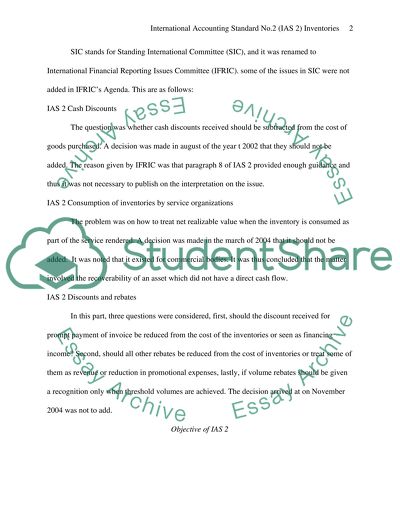Cite this document
(Analyzing the International Accounting Standard No.2 (IAS2) Inventory Essay Example | Topics and Well Written Essays - 1500 words, n.d.)
Analyzing the International Accounting Standard No.2 (IAS2) Inventory Essay Example | Topics and Well Written Essays - 1500 words. https://studentshare.org/finance-accounting/1562819-international-accounting-standard-no2-ias2-inventory
Analyzing the International Accounting Standard No.2 (IAS2) Inventory Essay Example | Topics and Well Written Essays - 1500 words. https://studentshare.org/finance-accounting/1562819-international-accounting-standard-no2-ias2-inventory
(Analyzing the International Accounting Standard No.2 (IAS2) Inventory Essay Example | Topics and Well Written Essays - 1500 Words)
Analyzing the International Accounting Standard No.2 (IAS2) Inventory Essay Example | Topics and Well Written Essays - 1500 Words. https://studentshare.org/finance-accounting/1562819-international-accounting-standard-no2-ias2-inventory.
Analyzing the International Accounting Standard No.2 (IAS2) Inventory Essay Example | Topics and Well Written Essays - 1500 Words. https://studentshare.org/finance-accounting/1562819-international-accounting-standard-no2-ias2-inventory.
“Analyzing the International Accounting Standard No.2 (IAS2) Inventory Essay Example | Topics and Well Written Essays - 1500 Words”. https://studentshare.org/finance-accounting/1562819-international-accounting-standard-no2-ias2-inventory.


